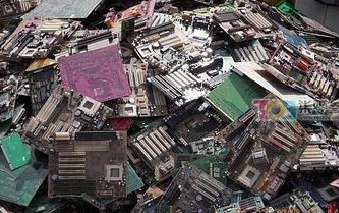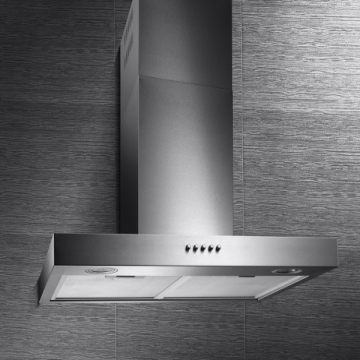Seven suggestions for electronic waste recycling
 The management and handling of e-waste is difficult, and it has become a matter of people's livelihood and environmental quality. Although China has promulgated the “Regulations on the Management of Waste Electrical and Electronic Products Recycling†(State Council Decree No. 551) and issued supporting policies, the investigation found that there are still many problems in the current recycling, disposal, and source control of electronic waste. At the same time, it should be noted that e-waste also harbors huge resource value, has dual attributes of environment and resources, and is an important part of “urban mineralsâ€. For example, recycling of electronic waste in resource-poor provinces such as Zhejiang and Guangdong has become an important resource for local economic development. To solve the problem of recycling, disposal and reuse of electronic waste, I think that we should start from the following seven aspects:
The management and handling of e-waste is difficult, and it has become a matter of people's livelihood and environmental quality. Although China has promulgated the “Regulations on the Management of Waste Electrical and Electronic Products Recycling†(State Council Decree No. 551) and issued supporting policies, the investigation found that there are still many problems in the current recycling, disposal, and source control of electronic waste. At the same time, it should be noted that e-waste also harbors huge resource value, has dual attributes of environment and resources, and is an important part of “urban mineralsâ€. For example, recycling of electronic waste in resource-poor provinces such as Zhejiang and Guangdong has become an important resource for local economic development. To solve the problem of recycling, disposal and reuse of electronic waste, I think that we should start from the following seven aspects: The first is to further build a multi-channel recycling system to promote the orderly flow of e-waste to a standardized enterprise. The seamless matching between an efficient and reasonable recycling system and the waste treatment and disposal facilities directly affects the efficiency and sustainability of electronic waste utilization and the level of pollution control. Under the drive of home appliance trade-in policies, consumers, sellers, recyclers, and formal dismantling companies constitute a benign recycling system. There are 105 fixed-point dismantling enterprises in China, and about 50% of the waste electrical and electronic products have gone to formal processing channels. However, after the end of the trade-in policy at the end of 2011, the recovery of e-waste in some areas was back to the recovery of mobile trade by small traders, and the situation began to spread, the price was unstable, the degree of intensification was low, and formal enterprises did not compete with small traders. . Should actively seek other ways to promote the treatment of enterprise recycling system, such as the development of home recycling, points recovery and other recycling models, encourage processing companies and sales stores to implement their own "new trade" and so on.
The second is to strictly control the illegal dismantling of e-waste and the control of toxic and hazardous substances. The disposal of e-waste is potentially polluting. Once it is handled improperly, the release of harmful substances in the product, such as heavy metals, bromide flame retardants and refrigerants, will cause pollution, and the process may also add or generate new pollutants. For example, the lead content of a CRT display only averages 1 to 2 kg; a ton of printed circuit board contains 20 kg of lead. In recent years, some well-known e-waste collection and distribution centers have emerged in various parts of China. The problem of illegal dismantling of e-waste is still serious, and the pollution problems caused by it have received international attention. At present, there is still a need to speed up the research and development of key technologies and equipment for electronic waste recycling, control environmental pollution caused by pollutants such as heavy metals and persistent organic pollutants, and reduce the human health risks caused by the improper handling of electronic waste.
The third is to effectively change the traditional concept of electronic waste as a valuable urban mineral. E-waste has a complex composition with a wide variety of recyclable materials, including nearly 50% of metals, 21% of plastics, and 18% of glass ceramics. It is a very good “rich oreâ€. For example, the gold content of computer motherboards is 250 g/t, while the grade of Chinese gold ore is generally 3–6 g/t, but the gold concentrates obtained through beneficiation are only about 70 g/t, which is far below the above content. . At present, China's processing companies are mainly dismantling machines. Dismantled products such as waste circuit boards, batteries, fluorescent powders, plastics, and low-cost display glasses obtained after dismantling the whole machine are generally sold directly to the downstream market or processed. Landfill and other disposal methods. For example, many waste circuit boards were transported to Guiyu and other places for processing in an informal and primitive way, causing environmental pollution and wasting resources.
The fourth is to raise the level of pollution control and awareness of pollution prevention and treatment of enterprises. Even the enterprises that have been listed in the national qualification licensing for waste electrical and electronic products, there is still a big gap between the existing treatment and disposal levels and the level of pollution control, especially the enterprises that can harmlessly dispose of hazardous wastes such as printed circuit boards and lead glass. very few. The environmental problems left by the informal treatment of e-waste such as open burning and pickling have yet to be resolved. Most e-waste processing companies and management personnel have low awareness and skills in the prevention and control of e-waste dismantling pollution, and they need to develop targeted knowledge and skills training. Governments at all levels should actively guide the development of industries, plan and build circular economy industrial parks, promote soil remediation demonstration projects, carry out on-site inspections and deadline corrections by individual dismantling and processing households, guide the original individual dismantling and processing households to gradually integrate and upgrade technologies. Level, promote the sustainable development of the industry.
The fifth is to increase the public’s awareness of e-waste recycling, disposal and disposal through linkages between environmental protection, education, and publicity departments. With the upgrading of electronic products, consumer groups dominated by young people are scrambling to compete for the latest electronic products. However, many people do not understand or are indifferent to the status of the electronic waste threatening the ecological environment. It is necessary to raise awareness among students of primary and secondary school students and colleges and universities about the pollution and resources of electronic waste.
Sixth, it is to promote the extension of producer responsibility systems and strengthen the source control of hazardous substances in electrical and electronic products. Electronic product manufacturers must not only be responsible for product quality, but also responsible for the recycling, disposal and disposal of waste electronic waste, reducing environmental risks and social risks. In addition, some manufacturers of electrical and electronic products have the phenomenon of “one enterprise, two systems†where one production line produces export electrical appliances in accordance with European clean production standards and one production line uses traditional raw materials, components, and processes as internal sales products. At present, the existing standards should be updated to strengthen corporate supervision and shorten the uniform time for different standards for export and domestic products.
Seventh, we will further strengthen the construction and improvement of supervision, law enforcement, and policy systems. The amount of e-waste generated is large. In addition to the “four machines and one brain†currently included in the management regulations, a large number of other electronic wastes are abandoned every year. In particular, e-waste containing heavy metals and other hazardous wastes also needs to be managed. It is also necessary to further strengthen the guidance, supervision and inspection of local work, crack down on the illegal import and dismantling of e-waste, and promote the healthy development of dismantling and disposal of e-waste.
To guarantee process quality control, Xunda has line leakage detecting system, line laser barcode system, Range Hoods appliances testing system, and apply finished product sample test, first article inspection and other complete spot testing systems.
Stainless steel+tempered glass
760m³/h air flow
3 speed electronic switch
6 layers washable aluminum grease filters
2x2LED lamps

Kitchen Range Hoods,Slim Hoods,Recirculating Range Hood,Stainless Steel Range Hood
xunda science&technology group co.ltd , https://www.gasstove.be